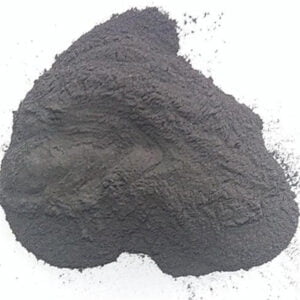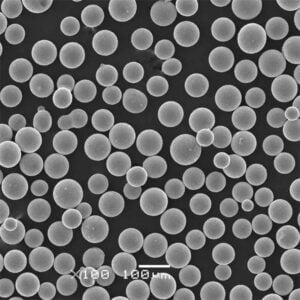An In-Depth Guide OF aluminium AM
Table of Contents
Overview
Aluminium Additive Manufacturing (AM) is revolutionizing the manufacturing industry by offering unprecedented levels of customization, efficiency, and material savings. This article explores the intricacies of aluminium AM, focusing on various metal powder models, their properties, applications, and advantages. We’ll also delve into the pros and cons of different aluminium AM powders, provide detailed tables for comparison, and include a comprehensive FAQ section to answer common questions.
Introduction to Aluminium Additive Manufacturing
Aluminium AM, often referred to as 3D printing, involves the layer-by-layer construction of objects using aluminium powders. This technique allows for the creation of complex geometries that are difficult or impossible to achieve with traditional manufacturing methods.
Why Aluminium?
Aluminium is lightweight, has excellent corrosion resistance, and offers good mechanical properties. These attributes make it an ideal candidate for AM, especially in industries such as aerospace, automotive, and medical devices.

Types of Aluminium AM Powders
Here’s a detailed look at some specific metal powder models used in aluminium AM:
| Powder Model | Composition | Properties | Applications |
|---|---|---|---|
| AlSi10Mg | Al, Si, Mg | High strength, good thermal properties | Aerospace, automotive |
| AlSi12 | Al, Si | Good castability, high corrosion resistance | Prototyping, lightweight structures |
| Scalmalloy | Al, Mg, Sc | High strength-to-weight ratio, excellent ductility | Aerospace, high-performance sports equipment |
| AlSi7Mg | Al, Si, Mg | High toughness, good fatigue resistance | Structural components |
| Al4047 | Al, Si | Low melting point, good fluidity | Electrical components, brazing |
| Al6061 | Al, Mg, Si | Versatile, good mechanical properties | General engineering, aerospace |
| Al7075 | Al, Zn, Mg, Cu | High strength, excellent fatigue resistance | Aerospace, military applications |
| Al2024 | Al, Cu, Mg | High strength, good machinability | Aerospace, structural applications |
| Al1050 | Pure Al | Excellent corrosion resistance, good electrical conductivity | Electrical and chemical applications |
| AlSi9Cu3 | Al, Si, Cu | High wear resistance, good machinability | Automotive, engine components |
Properties and Characteristics of Aluminium AM Powders
| Powder Model | Density (g/cm³) | Tensile Strength (MPa) | Yield Strength (MPa) | Elongation (%) |
|---|---|---|---|---|
| AlSi10Mg | 2.68 | 460 | 260 | 10 |
| AlSi12 | 2.68 | 345 | 170 | 4 |
| Scalmalloy | 2.67 | 520 | 460 | 13 |
| AlSi7Mg | 2.67 | 330 | 220 | 7 |
| Al4047 | 2.68 | 240 | 180 | 2 |
| Al6061 | 2.70 | 310 | 275 | 12 |
| Al7075 | 2.81 | 572 | 503 | 11 |
| Al2024 | 2.78 | 470 | 325 | 19 |
| Al1050 | 2.70 | 90 | 20 | 35 |
| AlSi9Cu3 | 2.75 | 300 | 170 | 3 |
Applications of Aluminium AM
Aluminium AM has diverse applications across various industries. Below is a table summarizing these applications:
| Industry | Application | Specific Example |
|---|---|---|
| Aerospace | Lightweight structural components | Airplane wings, satellite parts |
| Automotive | Customizable parts | Engine components, bespoke interior fittings |
| Medical Devices | Customized implants and prosthetics | Hip implants, dental crowns |
| Consumer Goods | Lightweight, durable products | Bicycle frames, sports equipment |
| Electronics | Heat sinks and casings | Custom cooling solutions, casings for electronics |
| Engineering | Prototyping and production | Functional prototypes, tooling |
Specifications, Sizes, Grades, Standards
Here is a detailed table outlining the specifications, sizes, grades, and standards for aluminium AM powders:
| Powder Model | Particle Size (µm) | Grade | Standard |
|---|---|---|---|
| AlSi10Mg | 15-45 | A1 | ASTM F3318-18 |
| AlSi12 | 10-50 | A2 | DIN EN 1706:2013 |
| Scalmalloy | 20-60 | A3 | AMS 4472 |
| AlSi7Mg | 15-45 | A4 | ASTM F3318-18 |
| Al4047 | 20-63 | A5 | DIN EN 1706:2013 |
| Al6061 | 20-60 | B1 | ASTM B221-14 |
| Al7075 | 20-60 | B2 | AMS 4045 |
| Al2024 | 15-45 | B3 | AMS 4037 |
| Al1050 | 10-50 | C1 | ASTM B491-06 |
| AlSi9Cu3 | 20-63 | C2 | DIN EN 1706:2013 |
Suppliers and Pricing Details
The following table provides a comparison of suppliers and pricing for various aluminium AM powders:
| Powder Model | Supplier | Price (USD/kg) | Location |
|---|---|---|---|
| AlSi10Mg | EOS | $80 | Germany |
| AlSi12 | Sandvik | $85 | Sweden |
| Scalmalloy | APWORKS | $120 | Germany |
| AlSi7Mg | GKN Additive | $90 | USA |
| Al4047 | Carpenter | $70 | USA |
| Al6061 | LPW Technology | $75 | UK |
| Al7075 | Praxair | $110 | USA |
| Al2024 | Additive Industries | $95 | Netherlands |
| Al1050 | Metalysis | $60 | UK |
| AlSi9Cu3 | Hoganas | $80 | Sweden |
Advantages of Aluminium AM
- Lightweight and Strong: Aluminium is known for its high strength-to-weight ratio, making it ideal for applications where weight reduction is crucial.
- Corrosion Resistance: Excellent resistance to corrosion extends the lifespan of parts, especially in harsh environments.
- Complex Geometries: AM allows for the creation of intricate designs that are impossible with traditional manufacturing.
- Material Efficiency: Minimizes waste, as only the necessary material is used.
- Customization: Tailor-made parts to fit specific needs, reducing the need for further modifications.
Disadvantages of Aluminium AM
- Cost: Initial setup and material costs can be high compared to traditional manufacturing.
- Surface Finish: May require post-processing to achieve the desired surface quality.
- Material Limitations: Not all aluminium alloys are suitable for AM.
- Production Speed: Can be slower for mass production compared to conventional methods.
- Equipment and Expertise: Requires specialized equipment and skilled operators.
Comparing Aluminium AM Powders
| Parameter | AlSi10Mg | AlSi12 | Scalmalloy | AlSi7Mg | Al4047 | Al6061 | Al7075 | Al2024 | Al1050 | AlSi9Cu3 |
|---|---|---|---|---|---|---|---|---|---|---|
| Strength | High | Medium | Very High | Medium | Low | High | Very High | High | Low | Medium |
| Corrosion Resistance | High | Very High | High | High | Medium | Medium | Low | Medium | Very High | Medium |
| Cost | Medium | Medium | High | Medium | Low | Medium | High | High | Low | Medium |
| Ease of Printing | Easy | Easy | Moderate | Easy | Easy | Moderate | Moderate | Moderate | Easy | Easy |
| Applications | Aerospace, Automotive | Prototyping | Aerospace, Sports | Structural | Electrical | Engineering | Aerospace, Military | Structural | Electrical, Chemical | Automotive |

FAQ
| Question | Answer |
|---|---|
| What is Aluminium AM? | Aluminium Additive Manufacturing (AM) is a 3D printing process that creates parts by adding material layer by layer using aluminium powders. |
| Why use aluminium in AM? | Aluminium is lightweight, strong, and corrosion-resistant, making it ideal for high-performance and weight-sensitive applications. |
| What industries use aluminium AM? | Key industries include aerospace, automotive, medical devices, consumer goods, electronics, and engineering. |
| **What are the benefits of aluminium AM? | Advantages include high strength-to-weight ratio, corrosion resistance, ability to create complex geometries, material efficiency, and customization. |
| Are there any drawbacks? | Disadvantages include higher initial costs, potential need for post-processing, material limitations, slower production speed, and requirement for specialized equipment. |
| How does aluminium AM compare to traditional manufacturing? | AM offers greater design flexibility, material efficiency, and customization, but it can be more expensive and slower for large-scale production. |
| Can all aluminium alloys be used in AM? | No, not all aluminium alloys are suitable for AM. The process and material must be carefully selected based on the desired properties and application. |
| What is the cost of aluminium AM powders? | Prices vary based on the specific powder model and supplier, ranging from $60 to $120 per kilogram. |
| What post-processing is required? | Post-processing may include surface finishing, heat treatment, and machining to achieve the desired quality and properties. |
| Where can I buy aluminium AM powders? | Various suppliers such as EOS, Sandvik, APWORKS, GKN Additive, and Carpenter offer aluminium AM powders. |
Conclusion
Aluminium Additive Manufacturing represents a significant leap forward in manufacturing technology, offering unique benefits in terms of design flexibility, material efficiency, and performance. By understanding the specific properties and applications of different aluminium powders, manufacturers can optimize their processes and products to meet the demands of modern industries. Whether you’re in aerospace, automotive, or any other field, aluminium AM can provide the tools you need to innovate and excel.
Share On
MET3DP Technology Co., LTD is a leading provider of additive manufacturing solutions headquartered in Qingdao, China. Our company specializes in 3D printing equipment and high-performance metal powders for industrial applications.
Inquiry to get best price and customized Solution for your business!
Related Articles
About Met3DP
Recent Update
Our Product
CONTACT US
Any questions? Send us message now! We’ll serve your request with a whole team after receiving your message.

Metal Powders for 3D Printing and Additive Manufacturing
COMPANY
PRODUCT
cONTACT INFO
- Qingdao City, Shandong, China
- [email protected]
- [email protected]
- +86 19116340731


















